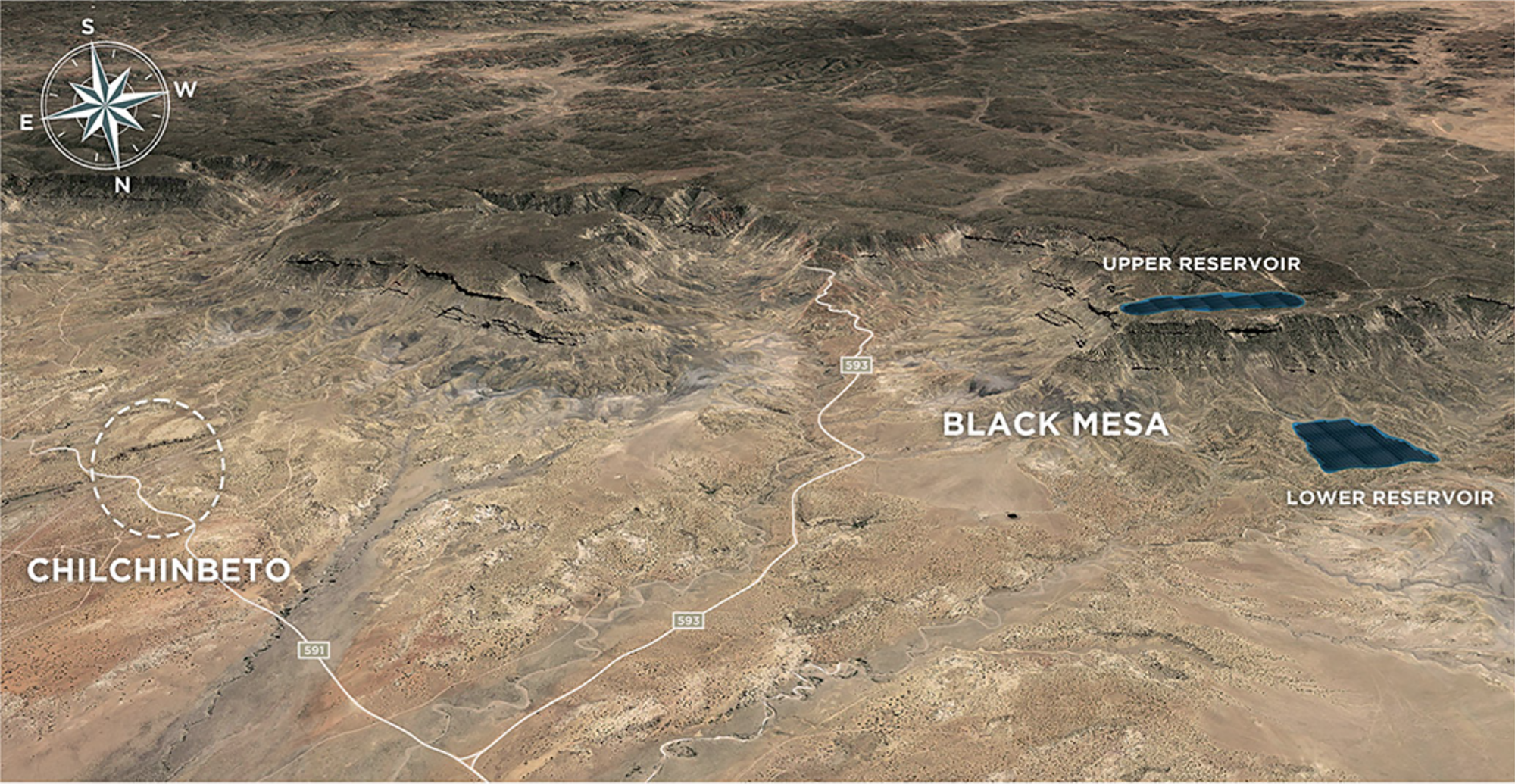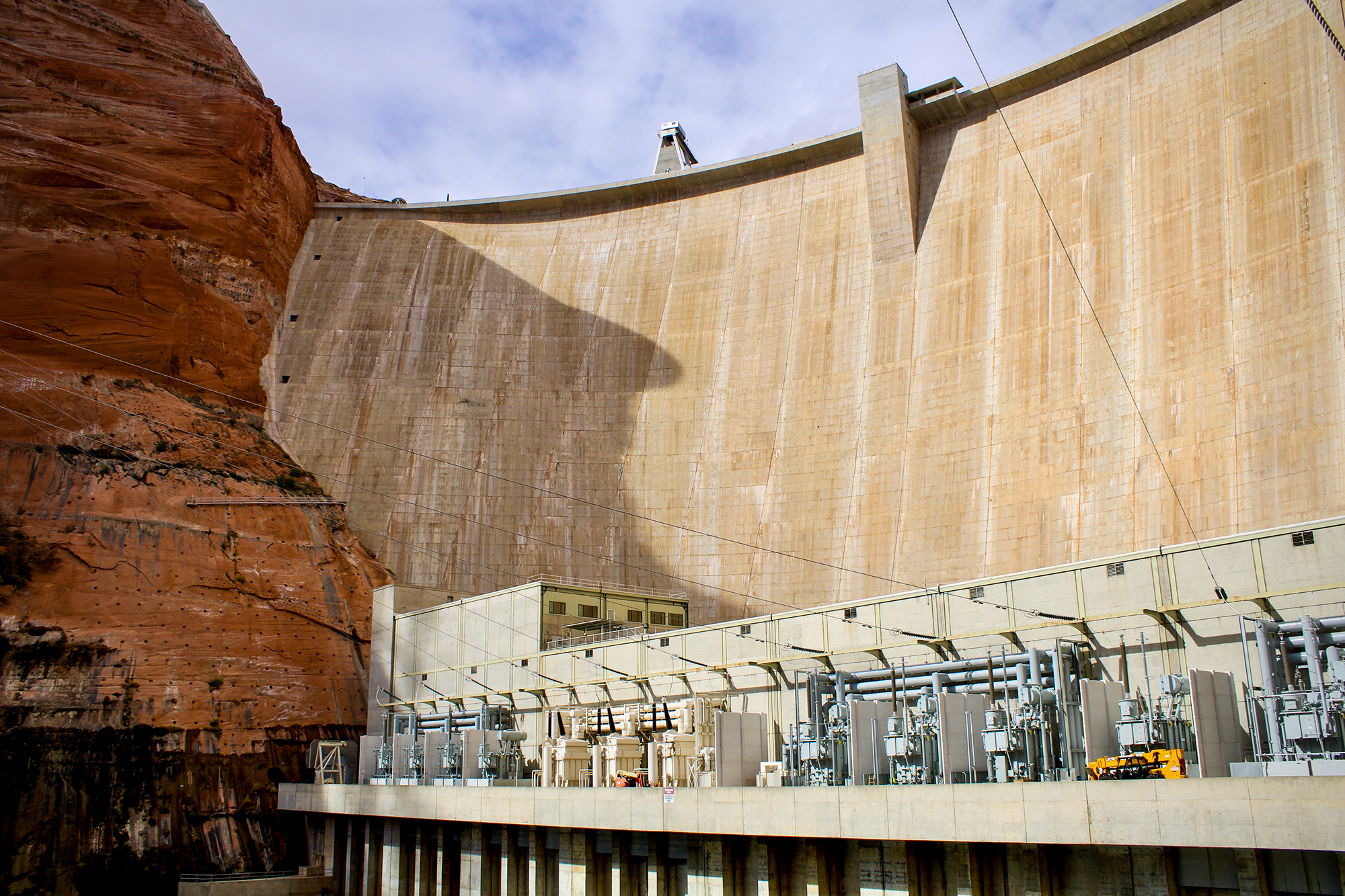Indianz.Com > News > Cronkite News: Water project on Navajo Nation sees controversy

‘Pumped’ hydropower plans proliferate; one in particular stirs opposition
Monday, January 15, 2024
Cronkite News
WASHINGTON, D.C. — When Adrian Herder saw the plans for proposed hydropower project on the Navajo Nation’s Black Mesa, he was shocked by the “outrageous” 450,000 acre-feet of water the project would reportedly use.
“Which is also kind of scary, too, especially given that we’re from such an arid region here on Navajo,” said Herder, media and community organizer for Tó Nizhóní Ání – or Sacred Water Speaks – a Diné-led environmental nonprofit.
Developers agree it would be scary – if it was right. But Denis Payre insists that the Black Mesa Pumped Storage Project – which is still years away from approval, much less construction – will use only about 3,000 acre feet of water while generating clean, renewable energy.
“The reason why Sacred Water Speaks reacted like that is probably because the process can be confusing if you’re not familiar with it,” said Payre, president and CEO of Nature and People First Arizona, the company that has started the permit process on the project. “They are not permits to build, they are just permits to survey.”
Crossed signals are among the many reasons that opponents are pushing back against the project, which they fear will deplete the region’s aquifers and repeat a history of developers ignoring tribal sovereignty.
The Black Mesa project may be the most controversial of a number of pumped hydropower generation proposals that have sprouted in Arizona recently. Conventional hydropower, like that generated at Glen Canyon Dam, uses water flowing downhill to turn a turbine to generate electricity. But pumped hydropower systems make that a closed loop by using two reservoirs: Water falls from the higher to the lower reservoir at night, generating power in the process. It is pumped back uphill during the day, using less energy than had been generated, and the process is repeated. Proposals for such projects have become increasingly popular in Arizona, according to filings with the Federal Energy Regulatory Commission. FERC is currently considering eight preliminary permit applications in Arizona for projects with a potential to generate 9,942 megawatts of electricity, and has approved preliminary permits for another seven, which could generate 6,150 megawatts. “We’ve noticed in the last what, like 18 months, how the number of projects have been proposed and they keep coming up,” said Jen Pelz, water advocacy director for the Grand Canyon Trust. “And every time we think that they’re going to stop, there’s like a new project.” A preliminary permit from the FERC only allows developers to investigate the proposed area for a project. It also gives the applicant priority to file a license application for the project, if approved. It is not permission to build. Nature and People First Arizona applied for a preliminary permit on Oct. 5, 2021. The FERC posted a notice in the Federal Register on November 7, 2022, saying the company’s application had been accepted and was open for comment until January 2023. The Black Mesa application envisions up to three pumped storage loops that could generate up to 6,000 megawatts of power, but Payre said the company plans to start with just one of those three, if it gets approved. “The purpose of these projects in the Black Mesa area is to serve essentially utilities in the West, mostly in Arizona, but potentially beyond that,” Payre said.The proposed #BlackMesaPumpedStorage (BMPSP) is divided into three (north, east & south) projects on Black Mesa's northern edge. There are 9 reservoirs in total, which would use 126 trillion gallons of Navajo water. 😵💫 #NoBMPSP #ProtectNavajoWater #NoFalseSolutions #TóBeeIiná pic.twitter.com/Ad6wNKtCpQ
— Tó Nizhóní Ání (@tonizhoniani) November 20, 2023


Note: This story originally appeared on Cronkite News. It is published via a Creative Commons license. Cronkite News is produced by the Walter Cronkite School of Journalism and Mass Communication at Arizona State University.
Search
Filed Under
Tags
More Headlines
Ernie Stevens: Protecting tribal sovereignty in a new political era
Rhonda LeValdo and Gaylene Crouser: Not In Our Honor
AUDIO: Legislative Hearing on H.R.410, H.R.412, H.R.504 & H.R. 741
Native America Calling: Native in the Spotlight with Tatanka Means
VIDEO: ‘Thank you for your leadership’: Sen. Lisa Murkowski (R-Alaska) to Sen. Brian Schatz (D-Hawaii)
VIDEO: Senate Committee on Indian Affairs Organizational Business Meeting
Alaska Beacon: Trump administration faces lawsuit over tribal gaming facility
Native America Calling: Medicaid’s next chapter in Indian Country
H.R.43, the Alaska Native Village Municipal Lands Restoration Act
H.R.42, the Alaska Native Settlement Trust Eligibility Act
H.R.226, the Eastern Band of Cherokee Historic Lands Reacquisition Act
House Subcommittee on Indian and Insular Affairs holds first hearing
Native America Calling: Rising home insurance rates put more Native Americans at risk
Citizen of Navajo Nation tapped for Indian Affairs post
Native America Calling: Native Bookshelf with Ann-Helén Laestadius
More Headlines
Rhonda LeValdo and Gaylene Crouser: Not In Our Honor
AUDIO: Legislative Hearing on H.R.410, H.R.412, H.R.504 & H.R. 741
Native America Calling: Native in the Spotlight with Tatanka Means
VIDEO: ‘Thank you for your leadership’: Sen. Lisa Murkowski (R-Alaska) to Sen. Brian Schatz (D-Hawaii)
VIDEO: Senate Committee on Indian Affairs Organizational Business Meeting
Alaska Beacon: Trump administration faces lawsuit over tribal gaming facility
Native America Calling: Medicaid’s next chapter in Indian Country
H.R.43, the Alaska Native Village Municipal Lands Restoration Act
H.R.42, the Alaska Native Settlement Trust Eligibility Act
H.R.226, the Eastern Band of Cherokee Historic Lands Reacquisition Act
House Subcommittee on Indian and Insular Affairs holds first hearing
Native America Calling: Rising home insurance rates put more Native Americans at risk
Citizen of Navajo Nation tapped for Indian Affairs post
Native America Calling: Native Bookshelf with Ann-Helén Laestadius
More Headlines